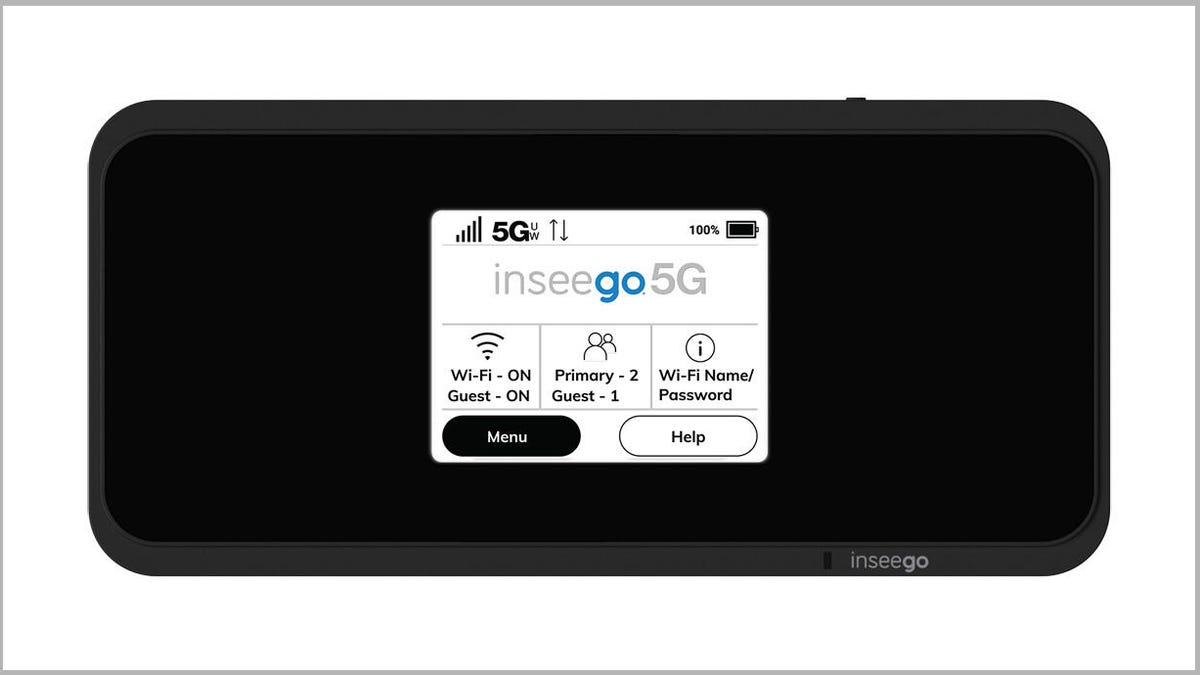 Why You Can Trust CNET
Why You Can Trust CNET Verizon unveils a new 5G hotspot for $400
The device supports more 5G spectrum bands and can connect up to 30 devices.

Verizon's new 5G hotspot costs $400.
Verizon has announced a new 5G hotspot for homes and businesses. The Inseego MiFi M2100 costs $400 straight up, or $16.66 per month for 24 months. The previous 5G hotspot from Verizon cost $650 by comparison. The new device has a better screen and can support low-band spectrum that's coming soon in addition to the high-band 5G spectrum supported by both.
Verizon's new 5G hotspot can link up to 30 devices via Wi-Fi 6, and connects to both Verizon's 5G network and 4G LTE network. With a direct tether to the modem using its USB-C port, you can get access to the 5G network on your phone, tablet or laptop.
The hotspot is powered by a Qualcomm Snapdragon X55 5G modem and comes with a 3500mAh battery, if you want to take it on the go with you. A separate 8500mAh battery will be available later this year. The MiFi M2100 has a 2.4-inch touchscreen display.
Read more: Verizon vs. AT&T vs. T-Mobile compared: How to pick the best 5G carrier for you
The three major US carriers are each using different radio waves for their 5G networks. Verizon uses high-band millimeter-wave 5G spectrum, which is limited to traveling short distances and being blocked by solid obstacles like buildings and trees. AT&T uses 850MHz spectrum for its low-band 5G network, which has better range but slower speeds, while T-Mobile also uses low-band 600MHz spectrum but is now also integrating Sprint's midband 2.5GHz spectrum for its "layer cake" approach to 5G since the carrier's $26.5 billion merger with Sprint went through in April.
AT&T and Verizon will also be employing a new technology called Dynamic Spectrum Sharing to share low-band 4G airwaves with 5G and improve performance, with Verizon last week also winning big in the midband spectrum auction. Midband spectrum is faster than low-band, and travels further than high-band.
Verizon's 5G network is only available in certain parts of 36 cities -- you can check out Verizon's 5G coverage map here. But with the new modem supporting both mmWave spectrum and low-band spectrum, Verizon is future proofing its offering by allowing you to get 5G in more places.

